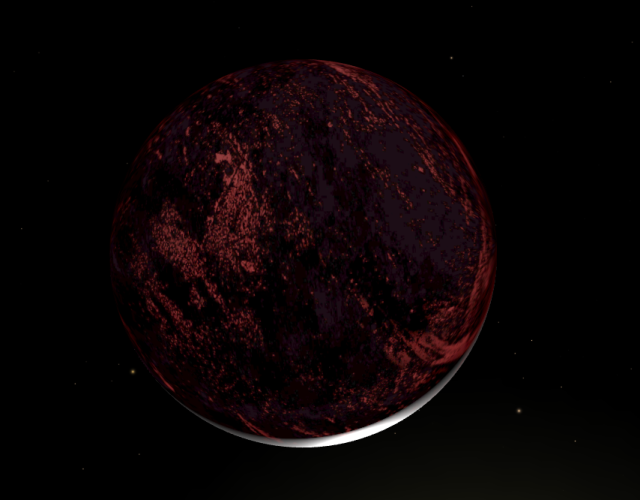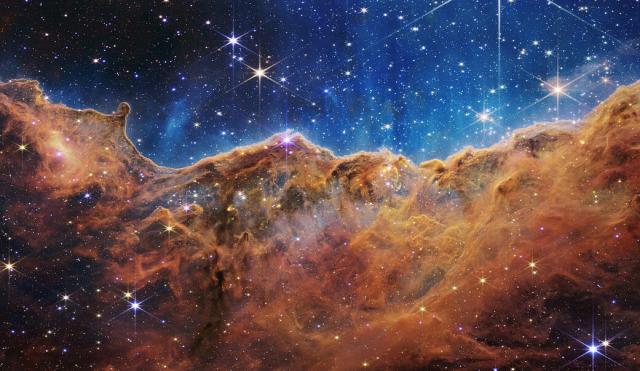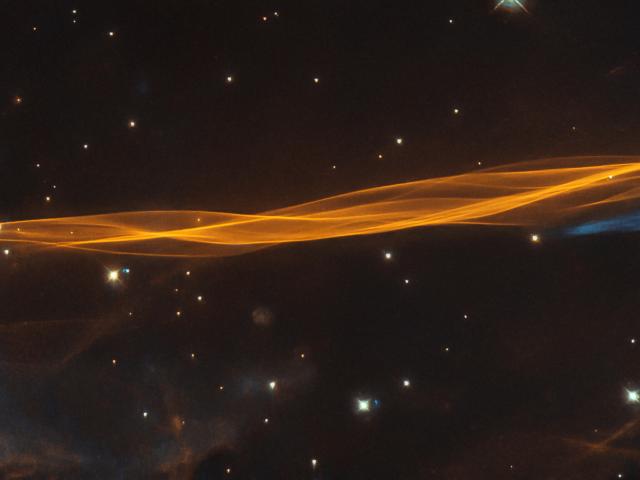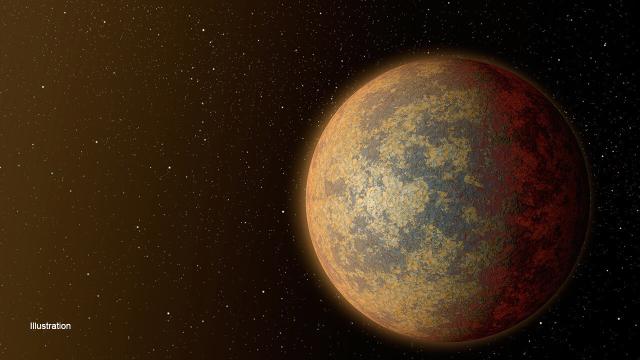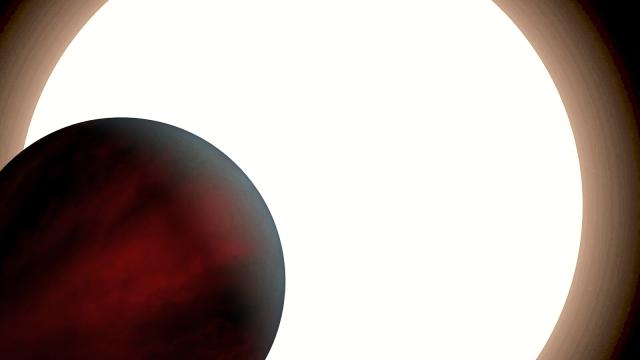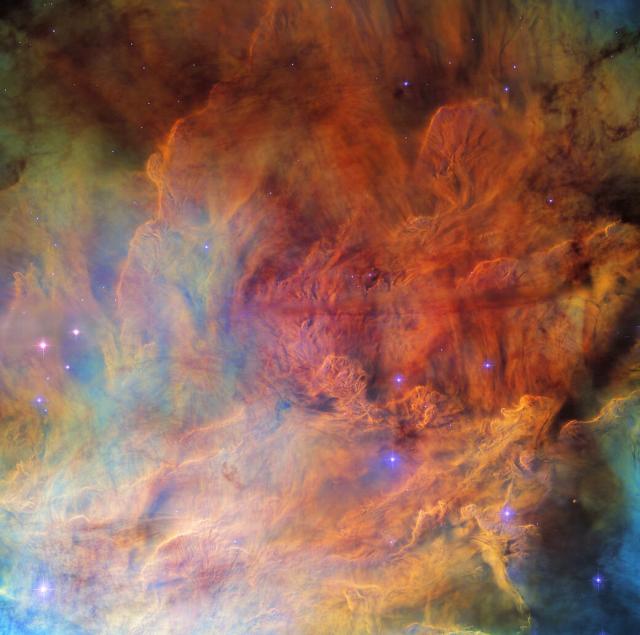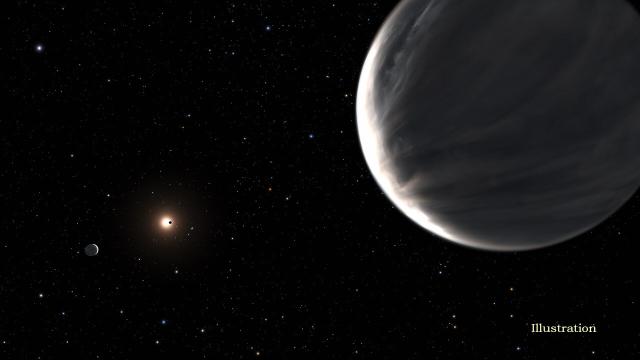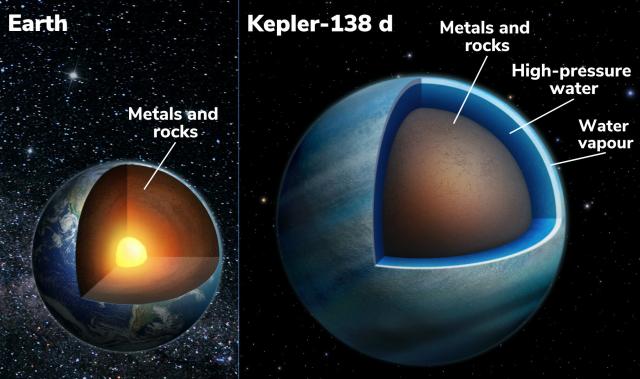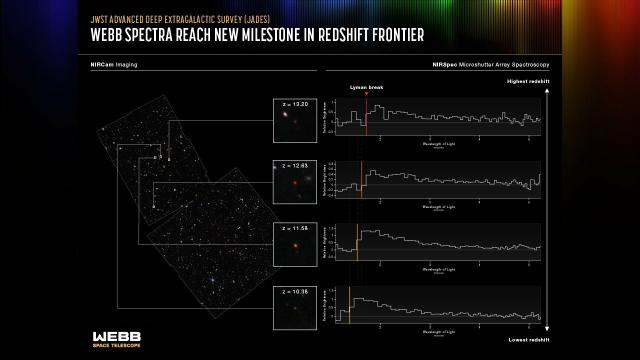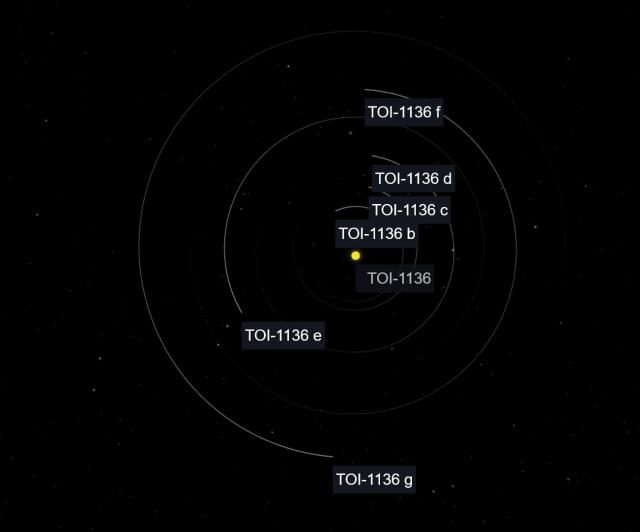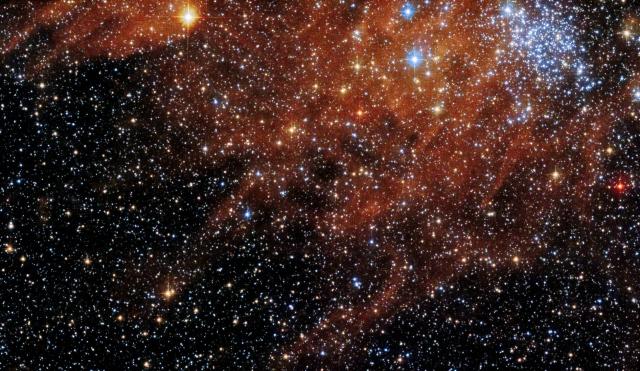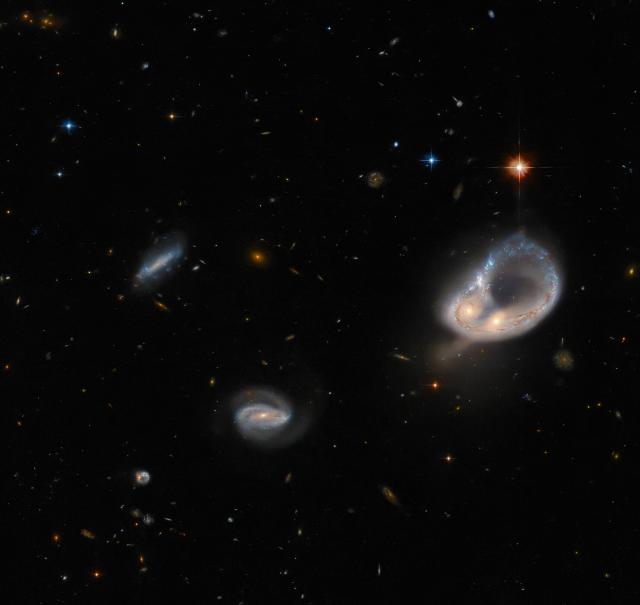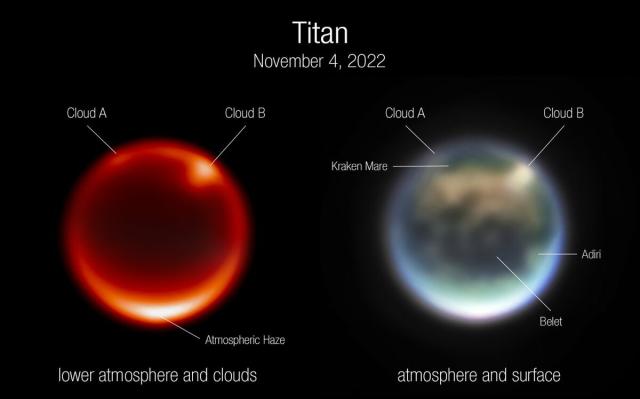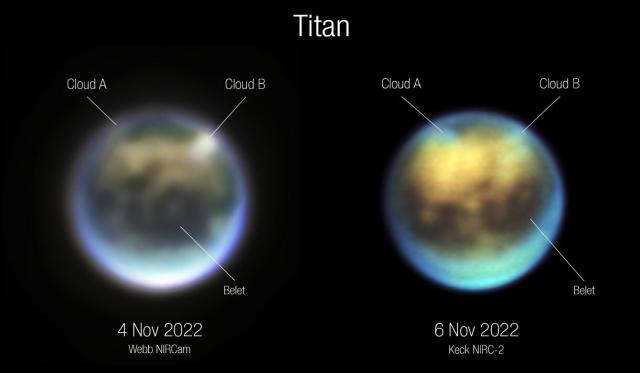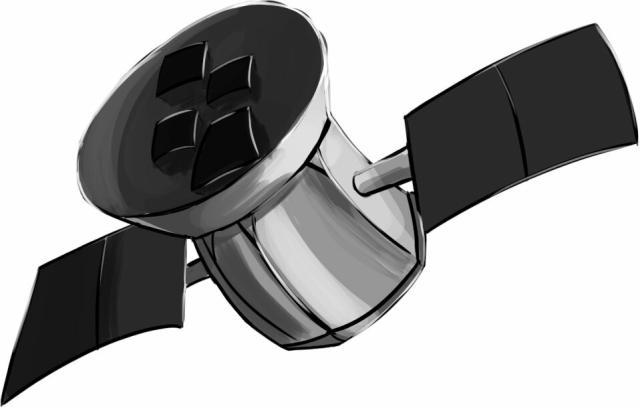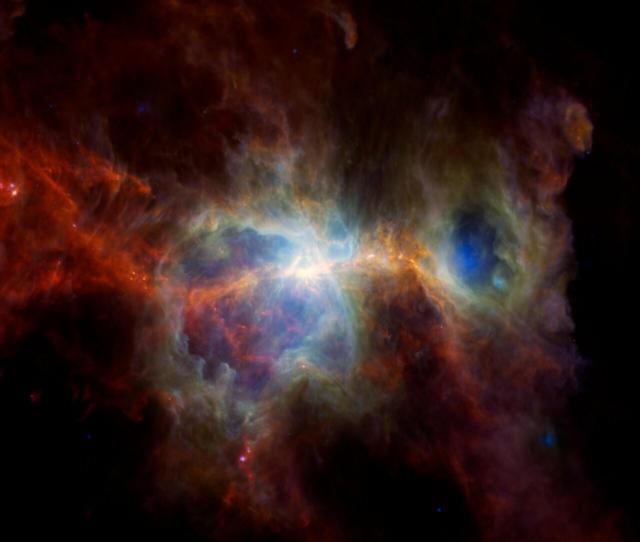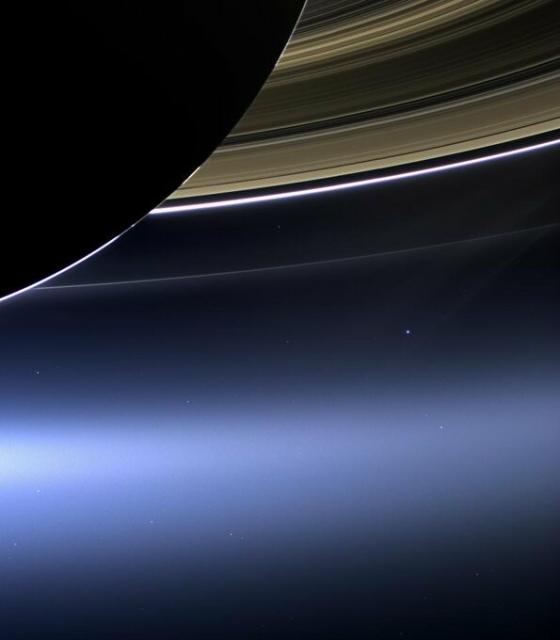Search
Items tagged with: NASAExoplanets
#MondayMotivation: Settle in for a #longread
#NASAExoplanets
Introduction | Life and Death of a Planetary System – Exoplanet Exploration: Planets Beyond our Solar System
NASA’s Exoplanet Exploration Program, the search for planets and life beyond our solar system.go.nasa.gov
go.nasa.gov/3hIGMB3
#NASAExoplanets
#NASAExoplanets
Are ready for Webb's probing eyes🎶
@NASAWebb launched at Christmastime a year ago. In 2023 we'll start to see science from each of the TRAPPIST-1 exoplanets. We can't wait! go.nasa.gov/3FTscQn
#NASAExoplanets
A Wonderland of Science Awaits
We've already had gifts aplenty this year and we're looking forward to the science to come in 2023, including Webb's observation of the TRAPPIST-1 planets.Exoplanet Exploration: Planets Beyond our Solar System
A delicate ribbon draped across space. This @NASAHubble image reminds us of all the things that connect us, regardless of distance.
It's part of a supernova blast wave in the constellation Cygnus, ~2,400 light-years away: go.nasa.gov/34TcdiW
#NASAExoplanets
Hubble Views Edge of Stellar Blast
This Hubble Space Telescope image depicts a small section of the Cygnus supernova blast wave, the result of the "death" of a star 20 times more massive than our Sun 10,000 to 20,000 years ago.Rob Garner (NASA)
Newborn stars glisten like snowflakes hidden in a great cloud of dust and gas, and revealed in infrared. As winter weather settles across the US, we hope you're warm and safe. go.nasa.gov/3C1PmSb
#NASAExoplanets
Stellar Snowflake Cluster
The newly revealed infant stars appear as pink and red specks toward the center and appear to have formed in regularly spaced intervals along linear structures.NASA Administrator (NASA)
#NASAExoplanets
#NASAExoplanets
#NASAExoplanets
Kepler-20e -- The Smallest Exoplanet (Artist's Concept) - Exoplanet Exploration: Planets Beyond our Solar System
This artist's animation flies through the Kepler-20 star system, where NASA's Kepler mission discovered the first Earth-size planets around a star beyond our own.Exoplanet Exploration: Planets Beyond our Solar System
#NASAExoplanets
A once overlooked giant planet may be spiraling into its fiery hot star! exoplanets.nasa.gov/news/1718/…
#NASAExoplanets
Discovery Alert: For This Familiar Planet, a Death Spiral
A previously discovered "hot Jupiter" appears to be spiraling into its star, new data shows.Exoplanet Exploration: Planets Beyond our Solar System
#NASAExoplanets
Hubble Views a Star-Studded Cosmic Cloud
A portion of the open cluster NGC 6530 appears as a roiling wall of smoke studded with stars in this image from the NASA/ESA Hubble Space Telescope.Andrea Gianopoulos (NASA)
How lovely are thy planets🎶
The seven Earth-sized worlds are prime targets for @NASAWebb to explore. We have so much science to look forward to in 2023! In the meantime, we wish you joy this holiday season. go.nasa.gov/3FTscQn
#NASAExoplanets
A Wonderland of Science Awaits
We've already had gifts aplenty this year and we're looking forward to the science to come in 2023, including Webb's observation of the TRAPPIST-1 planets.Exoplanet Exploration: Planets Beyond our Solar System
#NASAExoplanets
Two Super-Earths May Be Mostly Water
Two exoplanets orbiting a red dwarf star may be "water worlds." They are 218 light-years away in the constellation Lyra, and are unlike any planet found in our solar system.Exoplanet Exploration: Planets Beyond our Solar System
#NASAExoplanets
One of @nasa's biggest stories of the year was a milestone 30 years in the making. We passed 5,000 confirmed exoplanets! We're over 5,200 now and our exploration is going strong. See and hear the pace of discovery👇
exoplanets.nasa.gov/news/1702/…
#NASAExoplanets
Cosmic Milestone: NASA Confirms 5,000 Exoplanets
The count of confirmed exoplanets just ticked past the 5,000 mark, representing a 30-year journey of discovery led by NASA space telescopes.Exoplanet Exploration: Planets Beyond our Solar System
#NASAExoplanets
Wide-field Infrared Survey Explorer (WISE)
NASA.gov brings you the latest images, videos and news from America's space agency. Get the latest updates on NASA missions, watch NASA TV live, and learn about our quest to reveal the unknown and benefit all humankind.NASA
The WISE/NEOWISE telescope started mapping our sky after its launch #OTD in 2009. A video of its view reveals dying stars, hungry black holes and more. go.nasa.gov/3FeMsdG
#NASAExoplanets
NASA Telescope Takes 12-Year Time-Lapse Movie of Entire Sky
Pictures of the sky can show us cosmic wonders; movies can bring them to life. Movies from NASA’s NEOWISE space telescope are revealing motion and change across the sky.NASA Jet Propulsion Laboratory (JPL)
#NASAExoplanets
Six super-Earths join the known worlds, bringing our exoplanet total to 5,227. TOI 1136 b, c, d, e, f and g are in orbital resonance, meaning their orbits are precisely timed to each other in a grand cosmic dance. exoplanets.nasa.gov/exoplanet-…
#NASAExoplanets
5,300 light-years from Earth, two bright stars are locked in a fiery dance. Their orbits bring them together every 8 years. Each time they meet, a new ring is formed. @NASAWebb caught more than a century of this celestial dance. go.nasa.gov/3RYZlwG
#NASAExoplanets
Star Duo Forms ‘Fingerprint’ in Space, NASA’s Webb Finds
A new image shows at least 17 dust rings created by a rare type of star and its companion locked in a celestial dance.Tony Greicius (NASA)
@NASAHubble captured this view of a tiny fraction of the Small Magellanic Cloud, a dwarf galaxy. It's one of our nearest neighbors, ''only'' about 200,000 light-years away. go.nasa.gov/3HjOuvL
#NASAExoplanets
Hubble Captures a Glittering Neighbor
This image from the NASA/ESA Hubble Space Telescope captures a small portion of the Small Magellanic Cloud.Andrea Gianopoulos (NASA)
The blue-white cluster of stars in the upper right of this image are loosely bound by gravity; after a few million years, they may settle into galaxies. go.nasa.gov/3BgPo8o
#NASAExoplanets
Hubble Spots Bright Splash of Stars Amid Ripples of Gas and Dust
Open cluster KMHK 1231 is a group of stars loosely bound by gravity. Seen in the upper left of this Hubble Space Telescope image, this cluster in the Large Magellanic Cloud is surrounded by a crimson nebula of gas and dust extending both to the right…Andrea Gianopoulos (NASA)
go.nasa.gov/3F8lJ2h
#NASAExoplanets
Hubble Observes a Mystery: 'Cotton Candy' Planets
"Super-Puffs" may sound like a new breakfast cereal. But it's actually the nickname for a unique and rare class of young exoplanets that have the density of cotton candy. Nothing like them exists in our solar system.Exoplanet Exploration: Planets Beyond our Solar System
#NASAExoplanets
NASA's Webb Reveals an Exoplanet Atmosphere as Never Seen Before
Webb's firsts keep coming: Observations of the exoplanet WASP-39 b show fingerprints of atoms and molecules, as well as signs of active chemistry and clouds.Exoplanet Exploration: Planets Beyond our Solar System
A tiny, nearby galaxy peeks from behind a bright foreground star. The Peekaboo Galaxy is much like galaxies found in the distant, early universe, without many of the heavier elements forged in stars over cosmic history. go.nasa.gov/3UCCt7N
#NASAExoplanets
Peekaboo! Tiny, Hidden Galaxy Provides a Peek Into the Past
Peeking out from behind the glare of a bright foreground star, astronomers have uncovered the most extraordinary example yet of a nearby galaxy with characteristics that are more like galaxies in the distant, early universe.Andrea Gianopoulos (NASA)
That’s how many worlds beyond our solar system we’ve confirmed so far. Super-Earths, Hot Jupiters and mini-Neptunes abound, though none of these types are found in our own planetary neighborhood. Some may be Earth size but none are Earth-like. exoplanets.nasa.gov
#NASAExoplanets
Exoplanet Exploration: Planets Beyond our Solar System
NASA’s Exoplanet Exploration Program, the search for planets and life beyond our solar system.Exoplanet Exploration: Planets Beyond our Solar System
go.nasa.gov/3iFph4p
#NASAExoplanets
Hubble Hunts an Unusual Galaxy
The galaxy merger Arp-Madore 417-391 steals the spotlight in this image from the NASA/ESA Hubble Space Telescope.Andrea Gianopoulos (NASA)
#NASAExoplanets
#NASAExoplanets
exoplanets.nasa.gov/tess
#NASAExoplanets
Transiting Exoplanets Survey Satellite (TESS) - Exoplanet Exploration: Planets Beyond our Solar System
NASA’s Exoplanet Exploration Program, the search for planets and life beyond our solar system.Exoplanet Exploration: Planets Beyond our Solar System
That's how many planets beyond our solar system that we've confirmed so far.
Some are so blasted by their stars that surfaces are covered in lava; others may have jewels floating in winds. Each one is wonder!
exoplanets.nasa.gov/discovery/…
#NASAExoplanets

Discoveries Dashboard | Discovery – Exoplanet Exploration: Planets Beyond our Solar System
See the latest real-time data dashboard from NASA on exoplanet discoveries, planet types, and more.Exoplanet Exploration: Planets Beyond our Solar System
#NASAExoplanets
Baby Star ‘Burps’ Tell Tales of Frantic Feeding, NASA Data Shows
The youngest stars often shine in bright bursts as they consume material from surrounding disks.Tony Greicius (NASA)
This one bangs. Literally. Material surrounding a black hole can produce intense bursts of electromagnetic radiation that can bounce off clouds of gas & dust in space. @chandraxray's sonification turns these ''light echoes'' into sound.
#NASAExoplanets
go.nasa.gov/3ARE7LM
#NASAExoplanets
Overview | Planet Types – Exoplanet Exploration: Planets Beyond our Solar System
So far scientists have categorized exoplanets into the following types: Gas giant, Neptunian, super-Earth and terrestrial, but there is complexity within these groups.Exoplanet Exploration: Planets Beyond our Solar System
#NASAExoplanets
#NASAExoplanets

